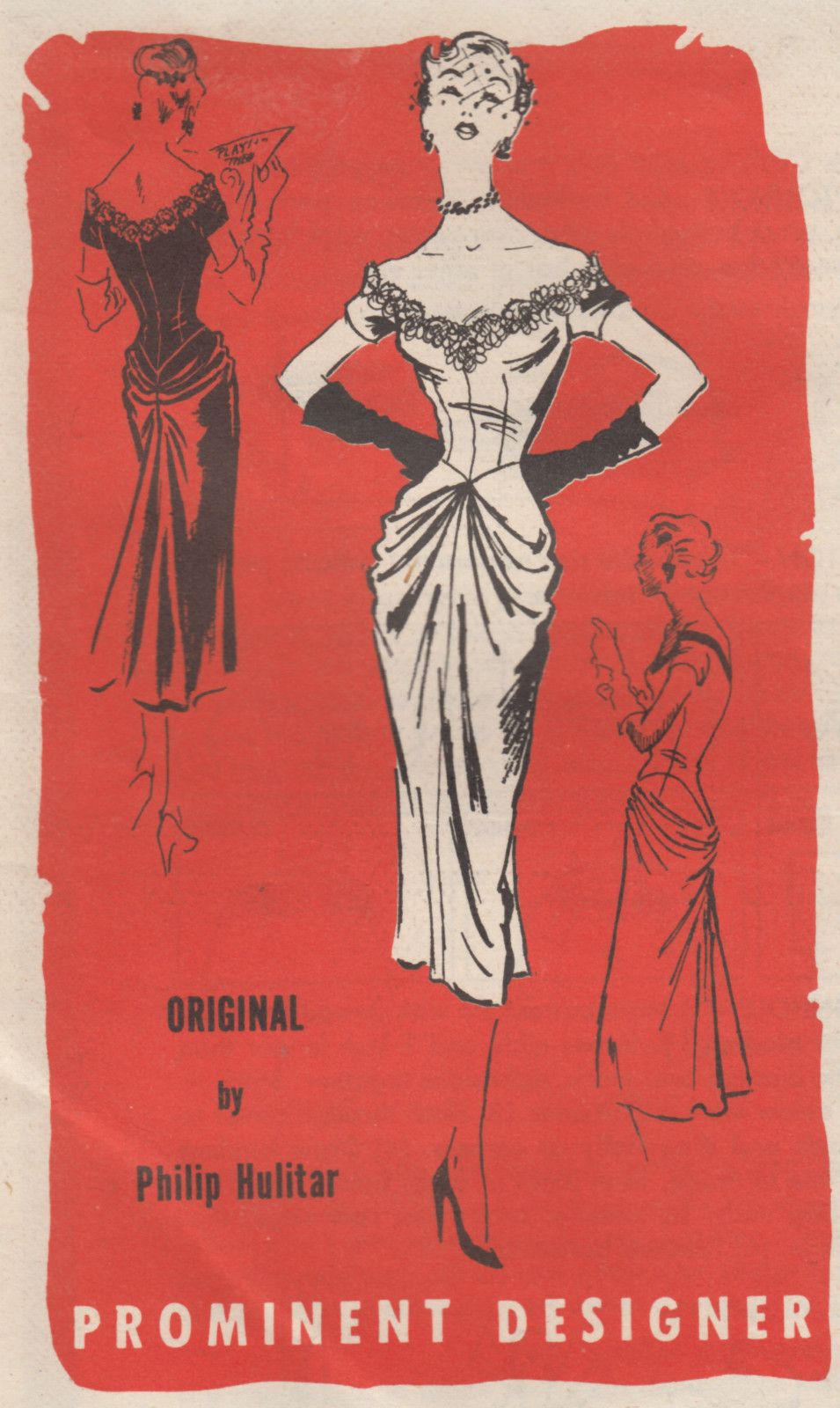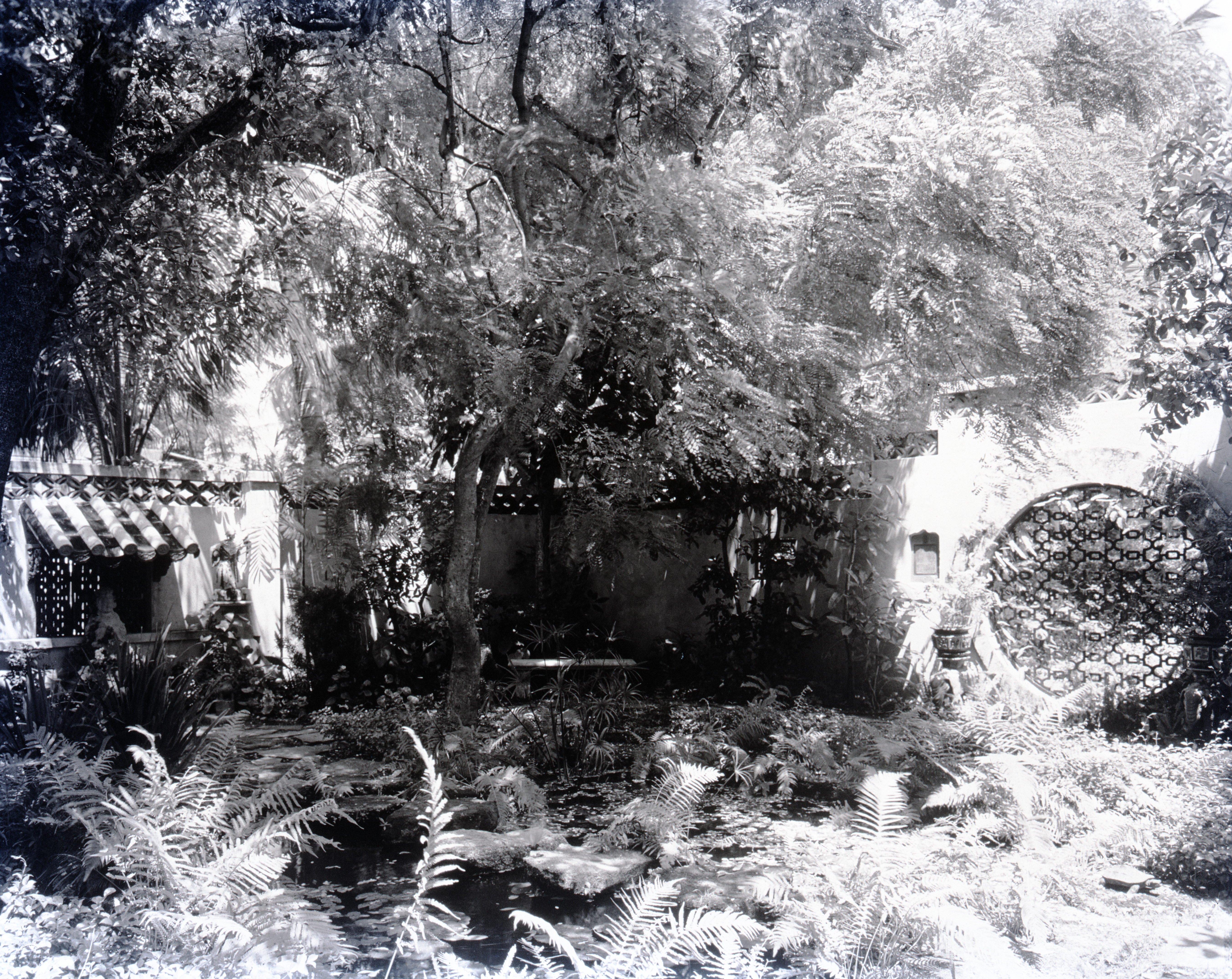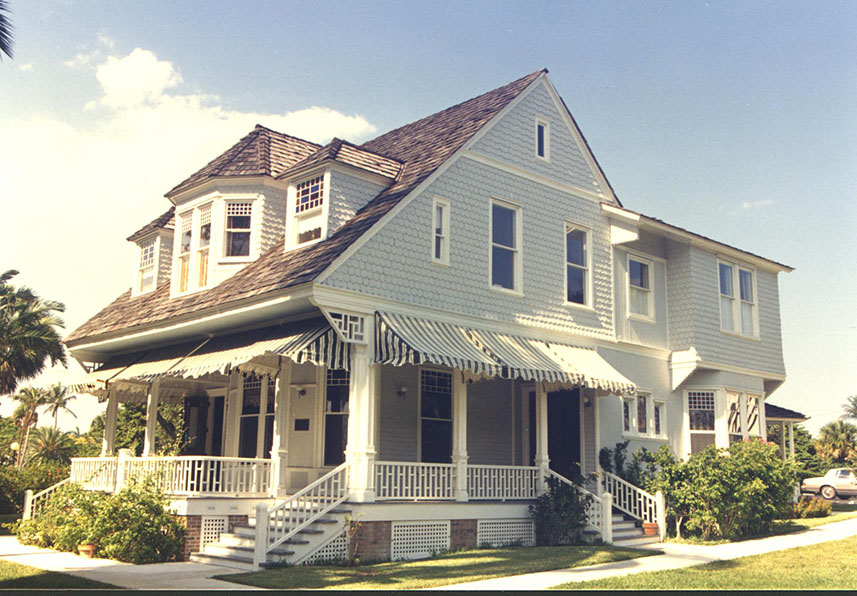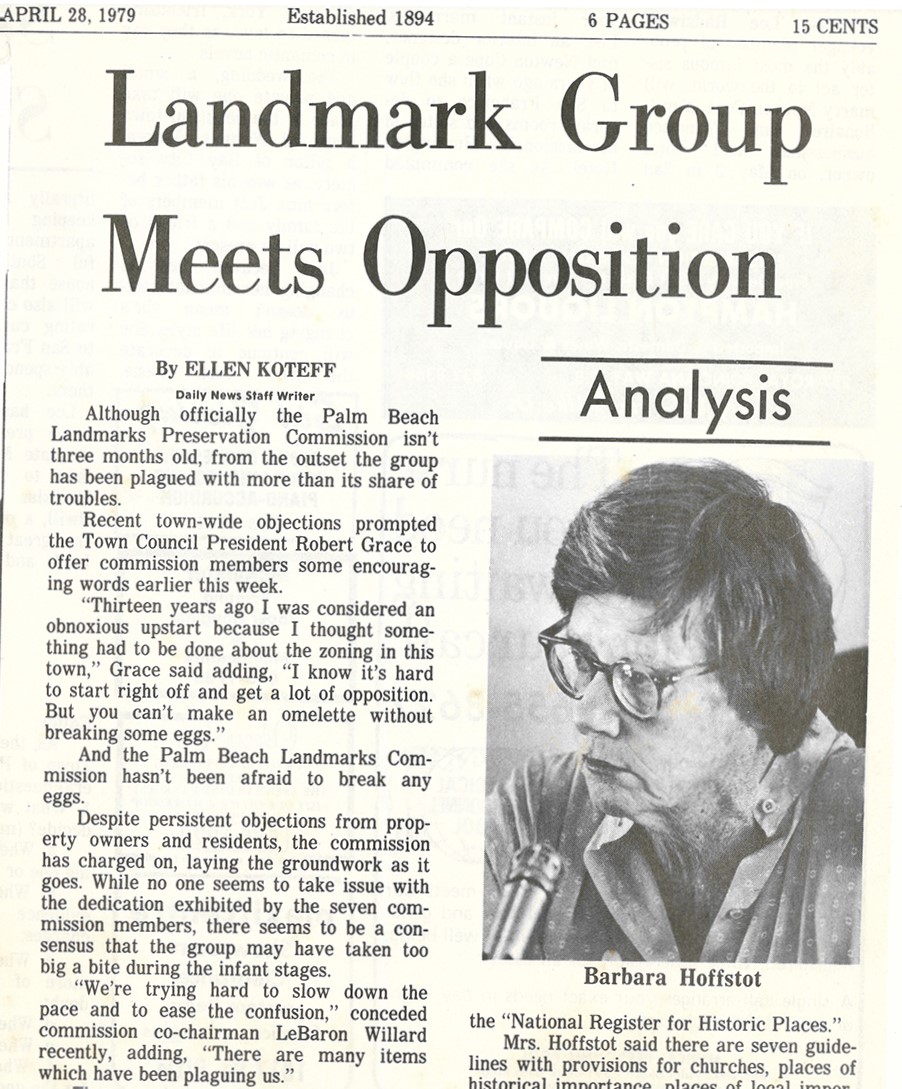
Introduction
Many of the important figures featured here did not set out as preservationists — Barbara Hoffstot being the exception. However, all of their paths aligned in their belief to preserve the architecture that makes Palm Beach special.
With the passing of the Landmarks Ordinance and the founding of the Preservation Foundation of Palm Beach, buildings now have the opportunity to exist in perpetuity. Historic buildings serve as emblems of the past while adapting to modern needs. They communicate through their architectural expression and inspire homeowners and passersby alike.
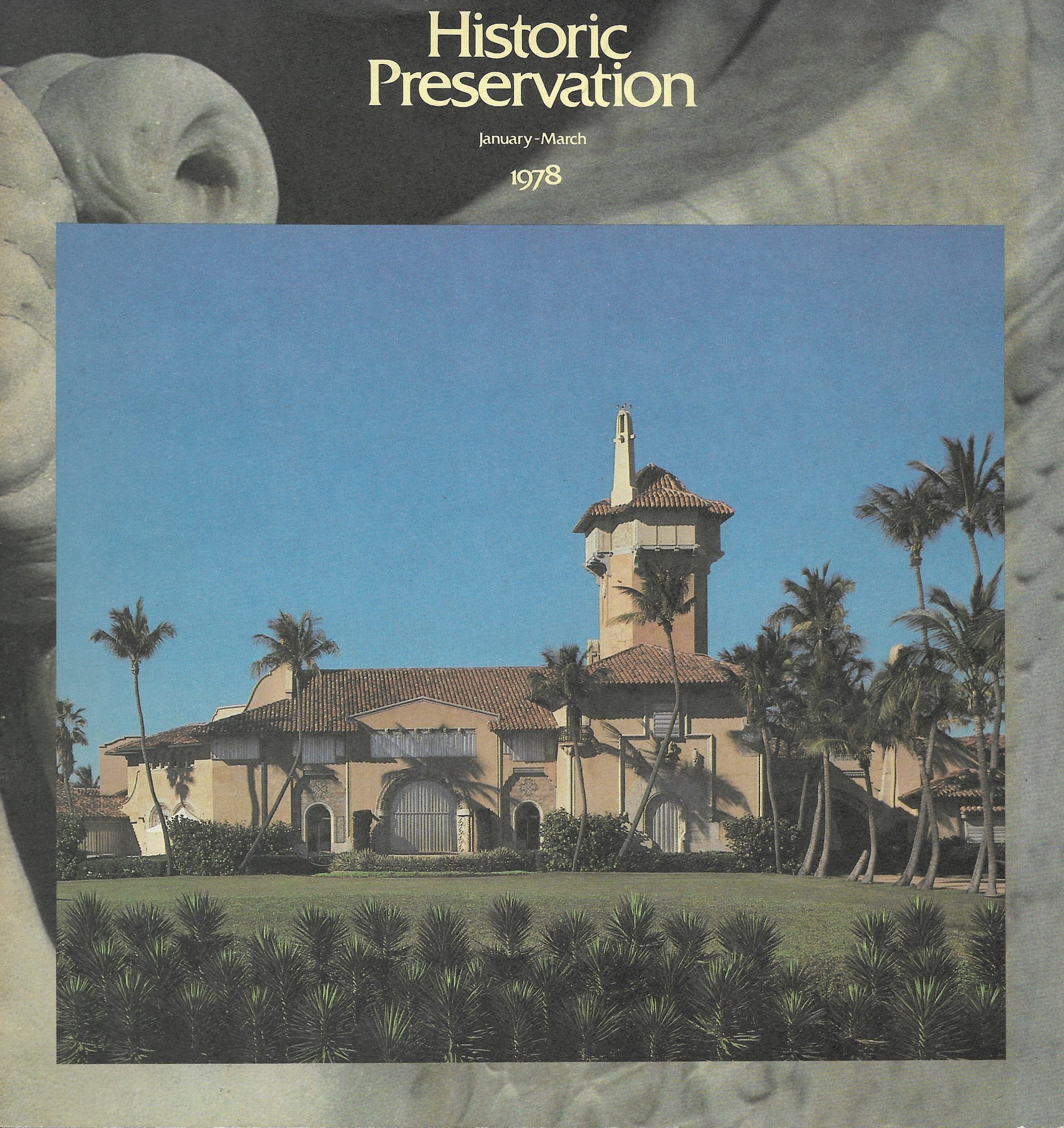
Today’s preservationists continue the work that was started forty years ago, in doing so they have prevented buildings from demolition, fostered education, and served as architectural and cultural stewards of Palm Beach.
Learn more about the founding of the Landmarks Ordinance here.
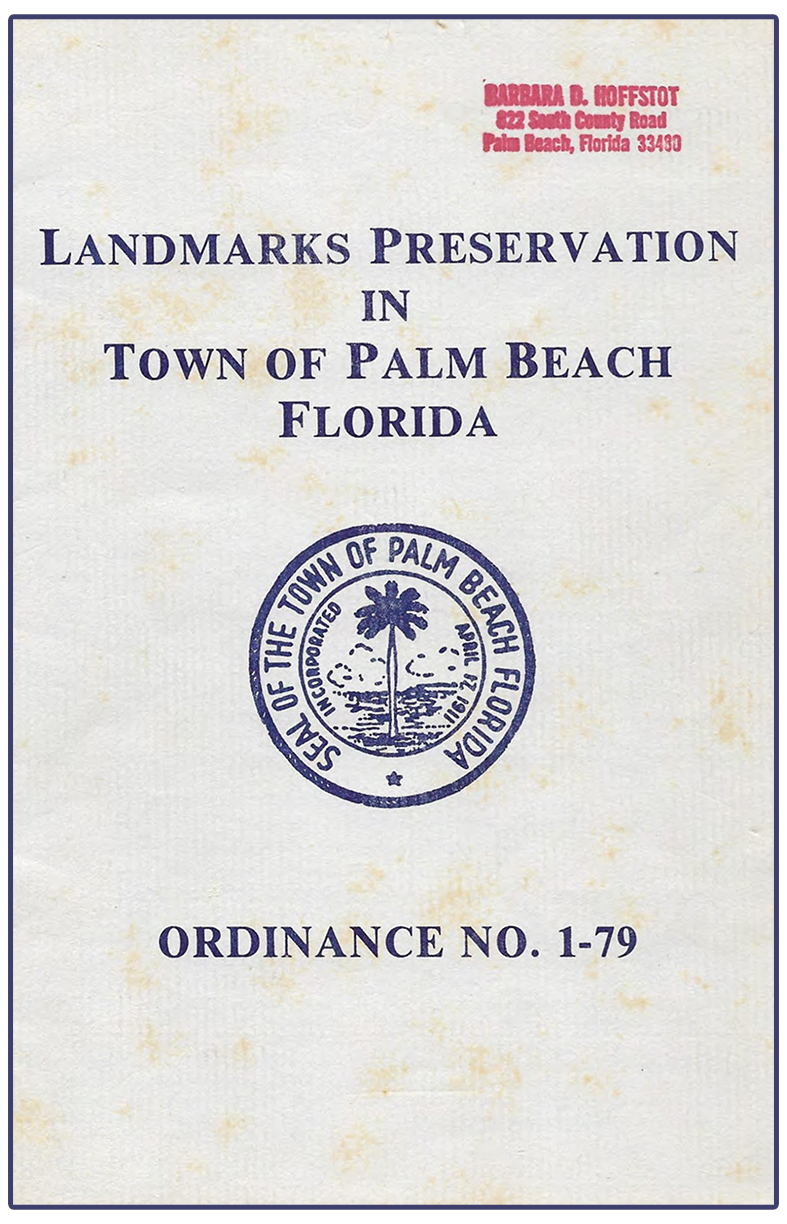
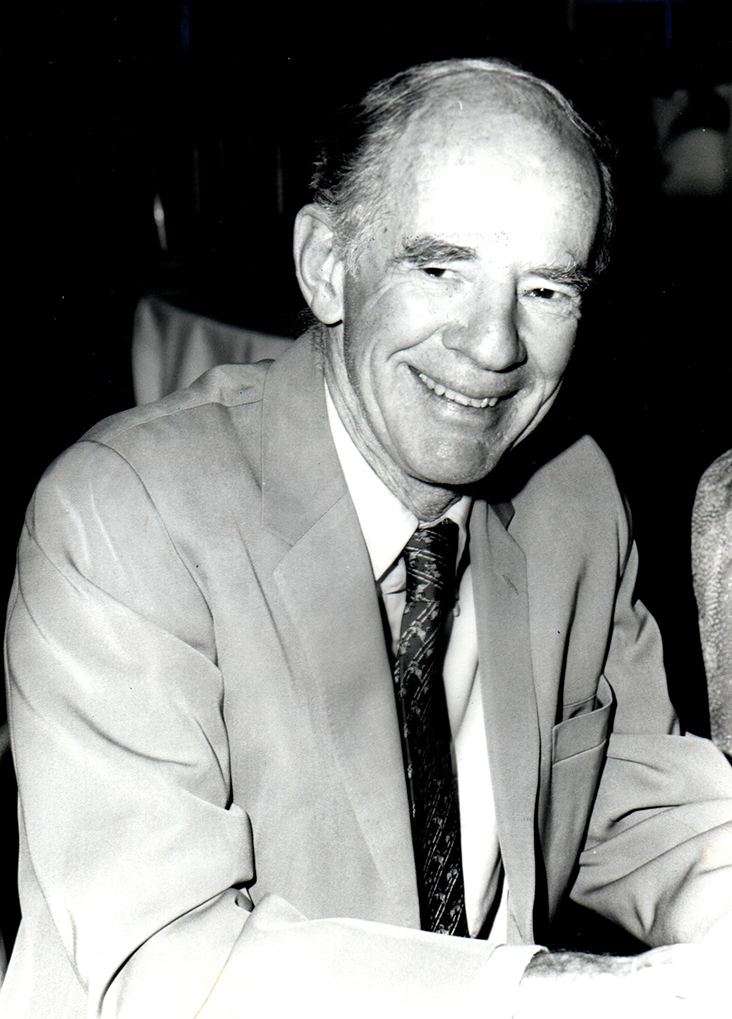
Robert Grace
Robert Grace

Robert M. Grace (1924-2022) was the driving force behind the Town’s zoning code in Palm Beach. After completing his studies at Yale University and enlisting in the U.S. Navy, Grace moved to Palm Beach to become an educator. He eventually served as assistant principal of the Graham Eckes School and later taught economics at Palm Beach Day Academy.
A strong believer in serving the community, Grace was devoted to putting an end to the rapid development that was threatening Palm Beach in the 1970s. Grace served on the Palm Beach Town Council from 1970 to 1984 and won his first council seat with the slogan “Vote as if the whole dignity of your town depended on it, Vote for Grace.” Over fourteen years, he served in many different roles, including president, and worked with the Palm Beach Civic Association to update the community’s civic plan from the 1940s. Afterwards, he served on the Zoning Commission for six years in many roles — including as chairman. During his tenure, Grace enacted a zoning code to protect the Town from overdevelopment. In a similar effort to stop further condominium development, Grace led the campaign for the Town’s purchase of the Par 3 Golf Course from a private owner in 1973.
Along with the creation of the Architectural Commission (ARCOM) in 1970, which evolved from the 1920s Art Jury, Grace was passionate about the creation of an organization with the sole purpose to preserve the architectural heritage of the town. In 1979, Grace, along with Bob Rogers, LeBaron Willard, and John VanRyan founded the Preservation Society of Palm Beach (later the Preservation Foundation of Palm Beach). Grace served as the first vice president in 1980 and was later appointed to the board in 2007. In the early 1980s, Grace encouraged the Foundation to purchase the northwest corner property of Peruvian and Hibiscus, which later became Pan’s Garden in 1994. During the economic crisis of 2008, Grace saved an important town serving gas station from going on out business.
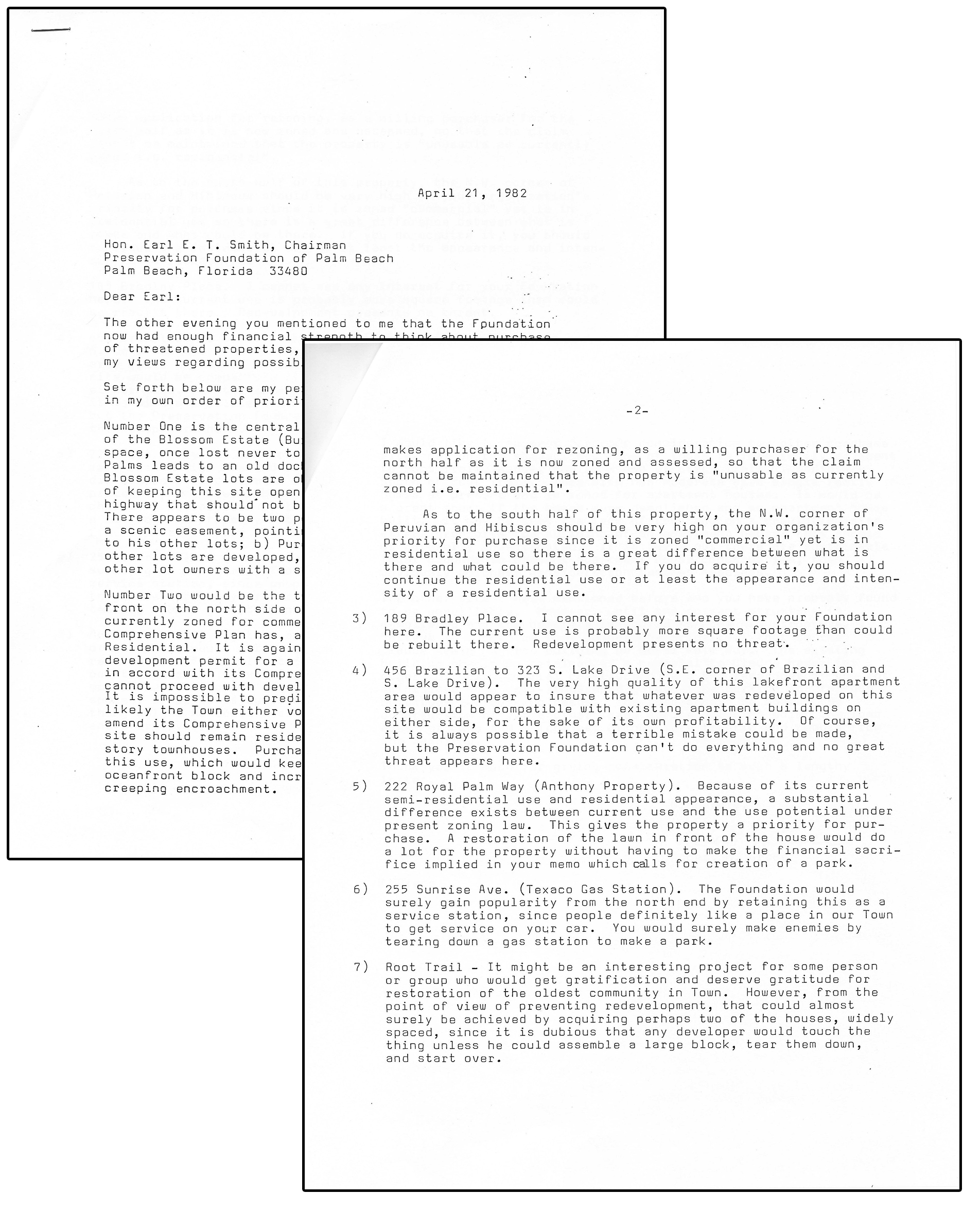
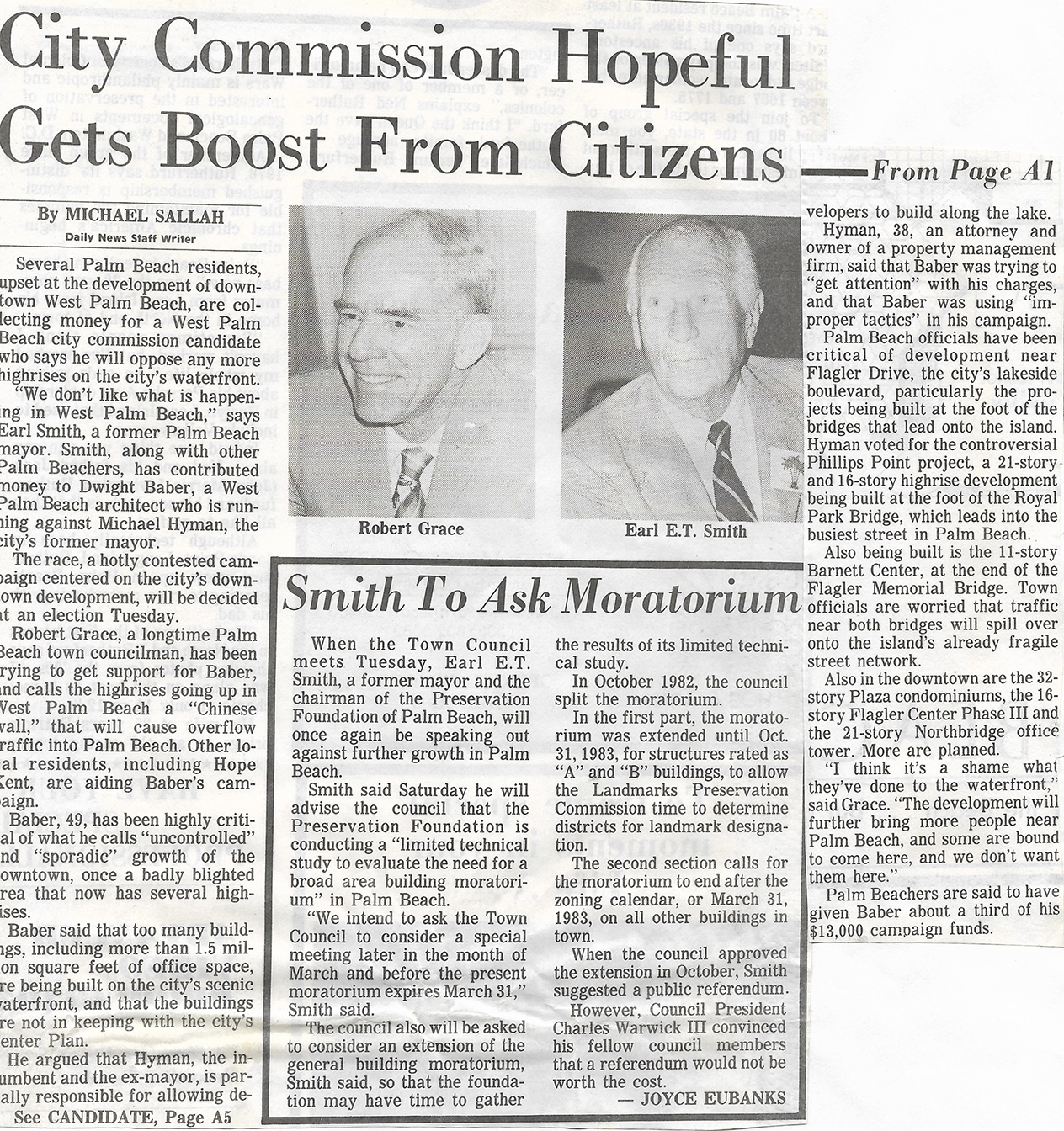
The Robert M. Grace Library located in the Foundation’s headquarters is named in honor of Grace and houses a collection of books and periodicals covering architecture, historic preservation, and more. The library also hosts periodic museum exhibits which celebrate the lives and works of prominent Palm Beach architects, designers, and residents.
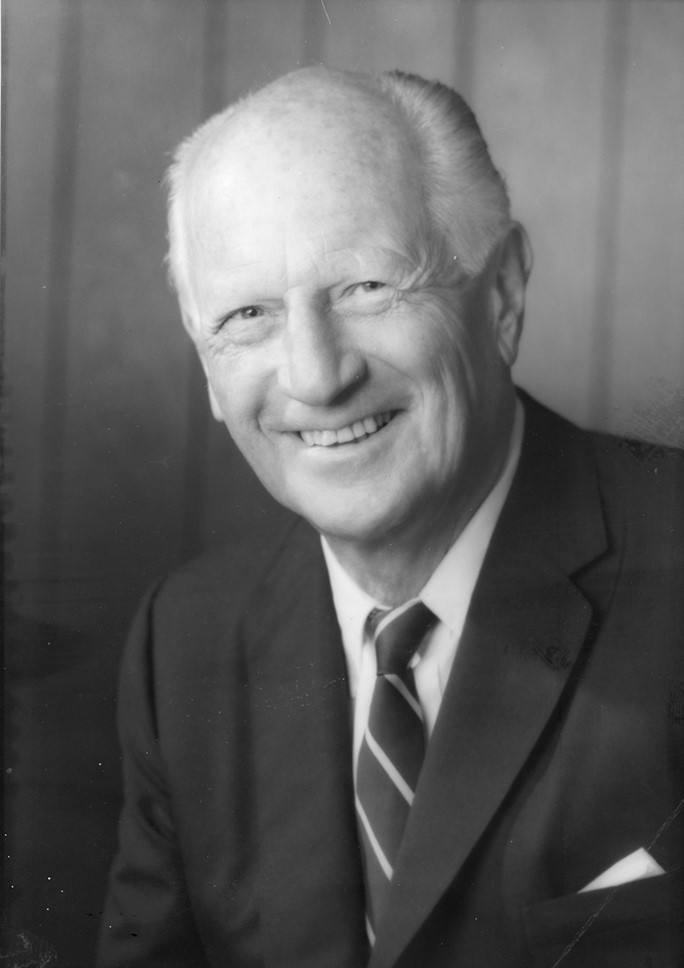
Earl E.T. Smith
Earl E.T. Smith

Earl E.T. Smith (1903-1991) always strived to preserve the beauty of Palm Beach for all of its citizens. He utilized his extraordinary depth of experience and knowledge of public affairs to further the cause of preservation in Palm Beach. Smith studied at Yale University and worked as an investment broker and member of the New York Stock Exchange. He started visiting Palm Beach in the 1920s and became a permanent resident in 1935. Smith was appointed as the ambassador to Cuba from 1957 to 1959, and mayor of Palm Beach from 1967 to 1978.
Smith was the first mayor to work full time and establish an office at Town Hall. His political might was evidenced by his ability to rally support for a three-year-long building moratorium in the late 1970s. He recommended this to the Town Council so that the Landmarks Commission would have time to complete its first survey of eligible historic sites. Similarly, Smith worked on a campaign led by his colleague Robert Grace for the Town’s purchase of the Par 3 Golf Course to avoid further development.
As a Palm Beach resident for over 50 years, Smith was a deeply respected member of the community and became the ideal spokesperson for the cause of preservation. From 1982 to 1991, he served as the founding chairman of the Preservation Foundation of Palm Beach and regularly spoke at Town Council and Landmarks Preservation Commission meetings in support of safeguarding the architectural heritage of Palm Beach.
In 1989, the Preservation Foundation of Palm Beach created an intimate park in his honor. Located directly west of Town Hall, Earl E.T. Smith Park’s charismatic architecture and lush landscaping provides a peaceful and tranquil escape for residents to enjoy while honoring a respected civic and political leader.
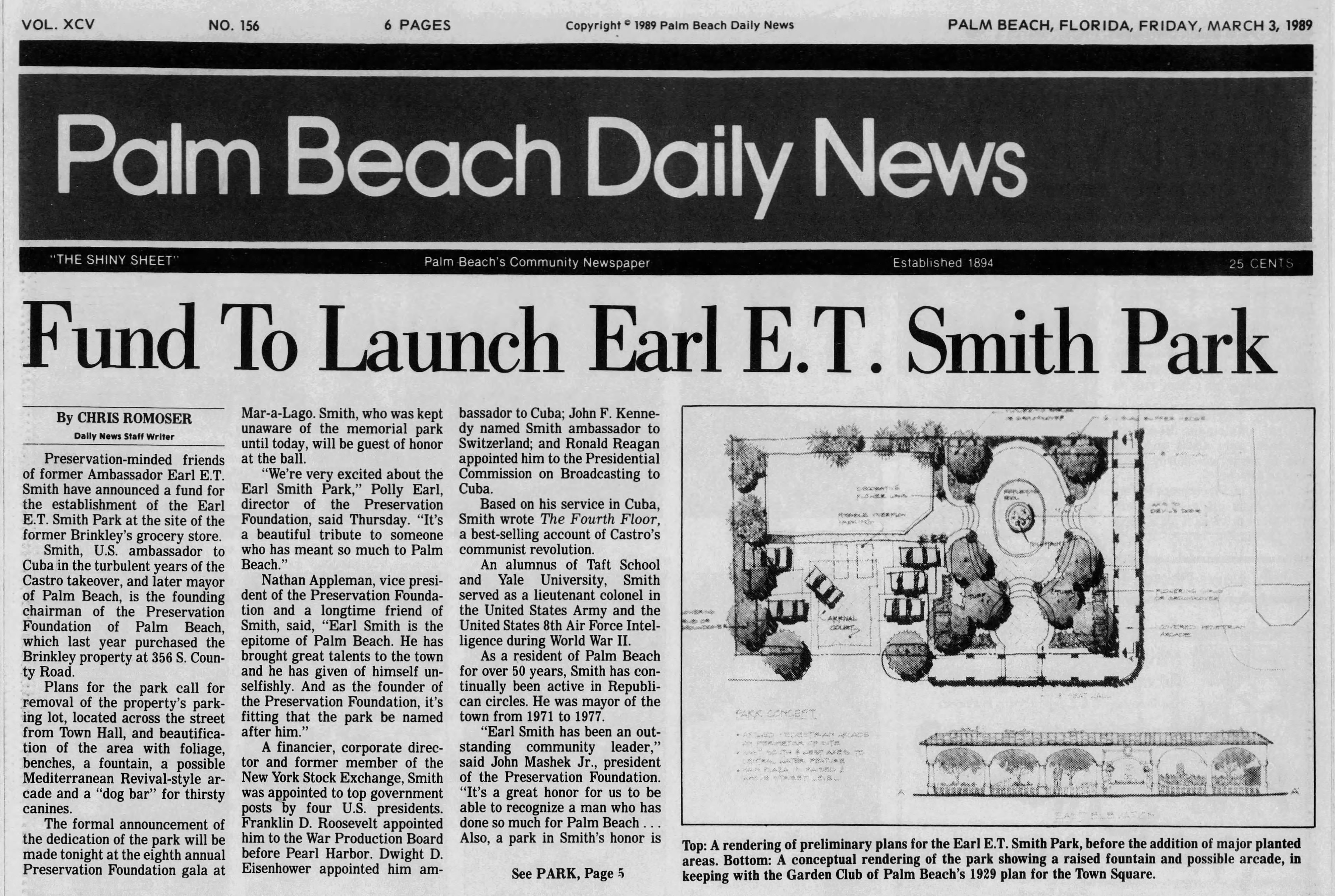
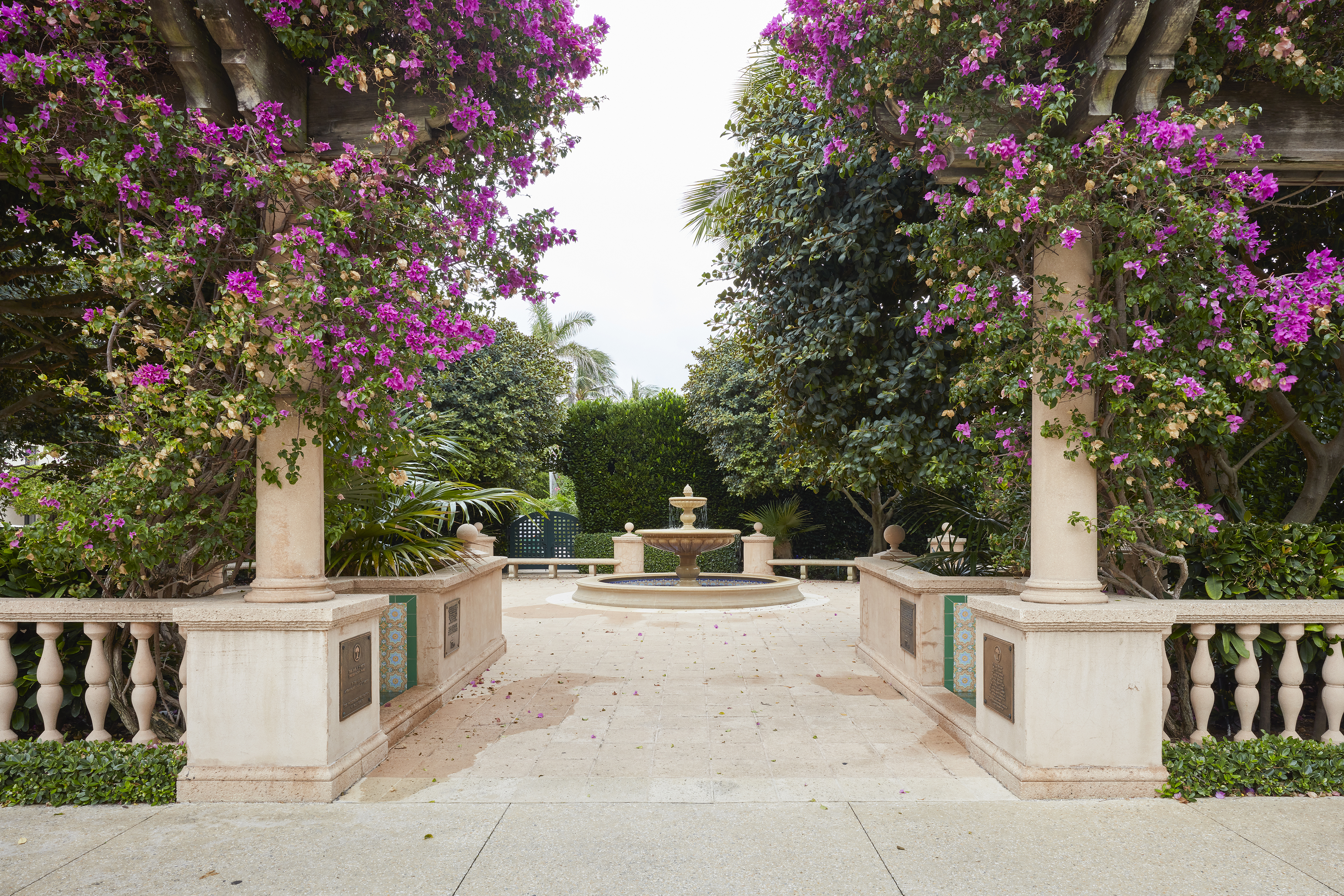

Barbara Hoffstot
Barbara Hoffstot

In her obituary, Barbara D. Hoffstot (1919-1984) was deemed the mother of Palm Beach preservation. Born in Pittsburgh, Hoffstot was a graduate of the Ethel Walker School and attended Rollins College. She was already entrenched in preservation in her hometown, where she founded the Pittsburgh History and Landmarks Foundation in 1964 and served as a trustee for the National Trust for Historic Preservation for three terms beginning in 1963. Distraught by the prevailing demolition trend in Palm Beach during the late 1950s, Hoffstot was encouraged to start a documentation process that would lead to the publication of Landmark Architecture of Palm Beach. Hoffstot’s seminal work set the stage for the development of the Landmarks Preservation Ordinance, which established the policy for the “protection, enhancement, and perpetuation” of historic properties.
Biking the streets of Palm Beach, Hoffstot photographed and recorded the understated beauty and historic character of the town. She initially identified 200 buildings that she believed worthy of preservation. The culmination of her findings was then published in Landmark Architecture of Palm Beach in 1974 and convinced many town citizens for the first time that Palm Beach has significant architectural heritage. Two subsequent editions were published in her lifetime; the second edition, released before the ordinance, contained pages hand stamped with “demolished” to emphasize the loss of historic properties. Her important work continued after her passing, with the publication of the third and fourth editions.
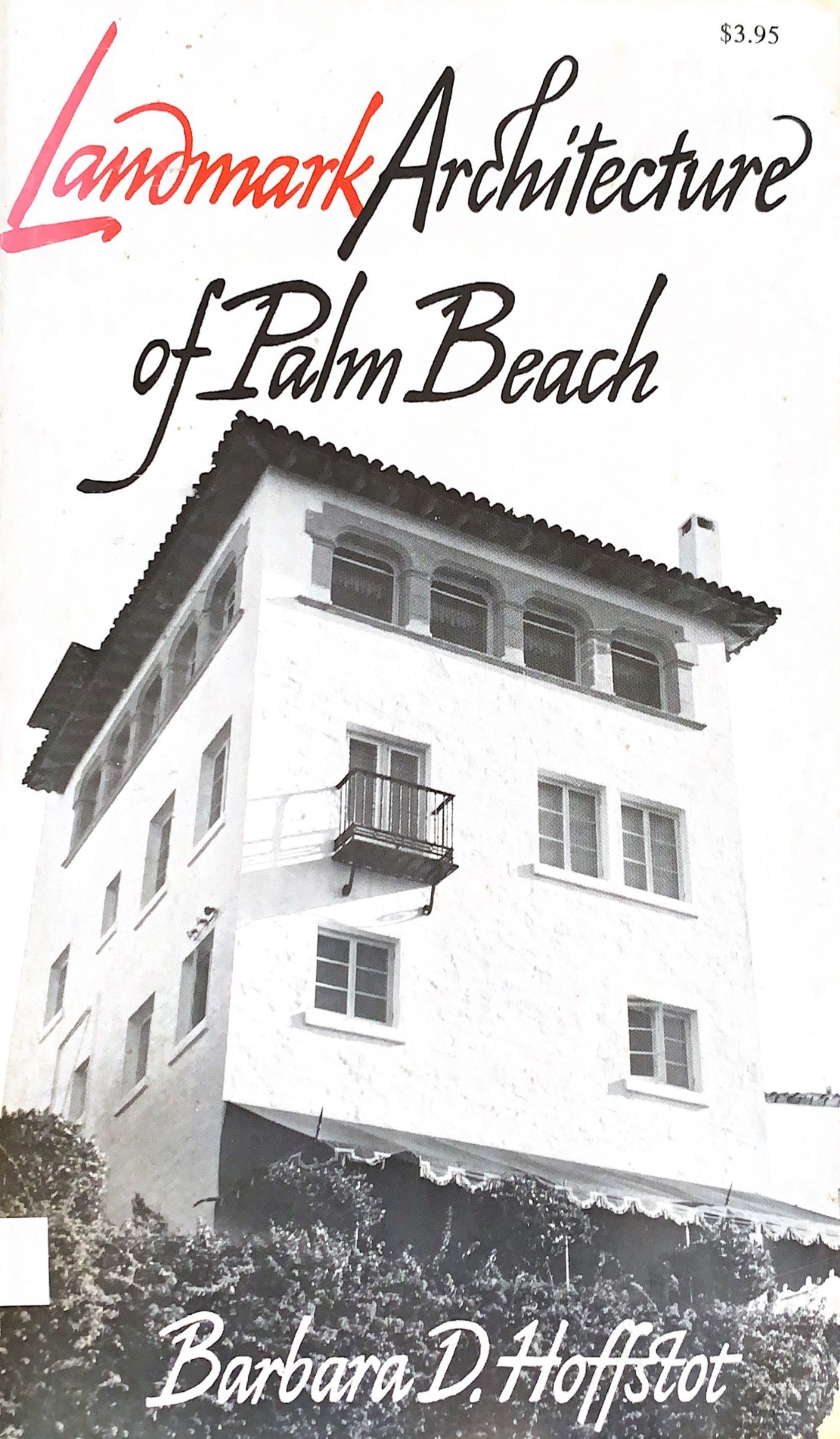
Hoffstot was a founding member of the Landmarks Preservation Commission, serving on the board until 1983. She was integral in drafting the Landmarks Preservation Ordinance with her lawyer husband and fellow preservationist Philip Huiltar in 1979 to ensure the protection of Palm Beach’s most significant architectural achievements. The first years of the commission were tumultuous, however the commissioners held steadfast in their commitment to preserve the beauty and architectural charm of Palm Beach. As Hoffstot once said, “Don’t let your very fine past be taken away uncaringly or without your knowledge and consent. Be prepared to fight when necessary.” Hoffstot was also involved in the Sea Gull Cottage Restoration Committee, the Town Hall Square Beautification Committee, and was a founding member of the Preservation Foundation of Palm Beach, where she served as vice president until her death in 1984.
The Hoffstot photography collection was donated to the Preservation Foundation of Palm Beach in the late 1990s and includes over 200 original photographs from the publication of Landmark Architecture in Palm Beach. The photographs are part of the Property Files collection at the Foundation which document vital information about the built environment of Palm Beach.
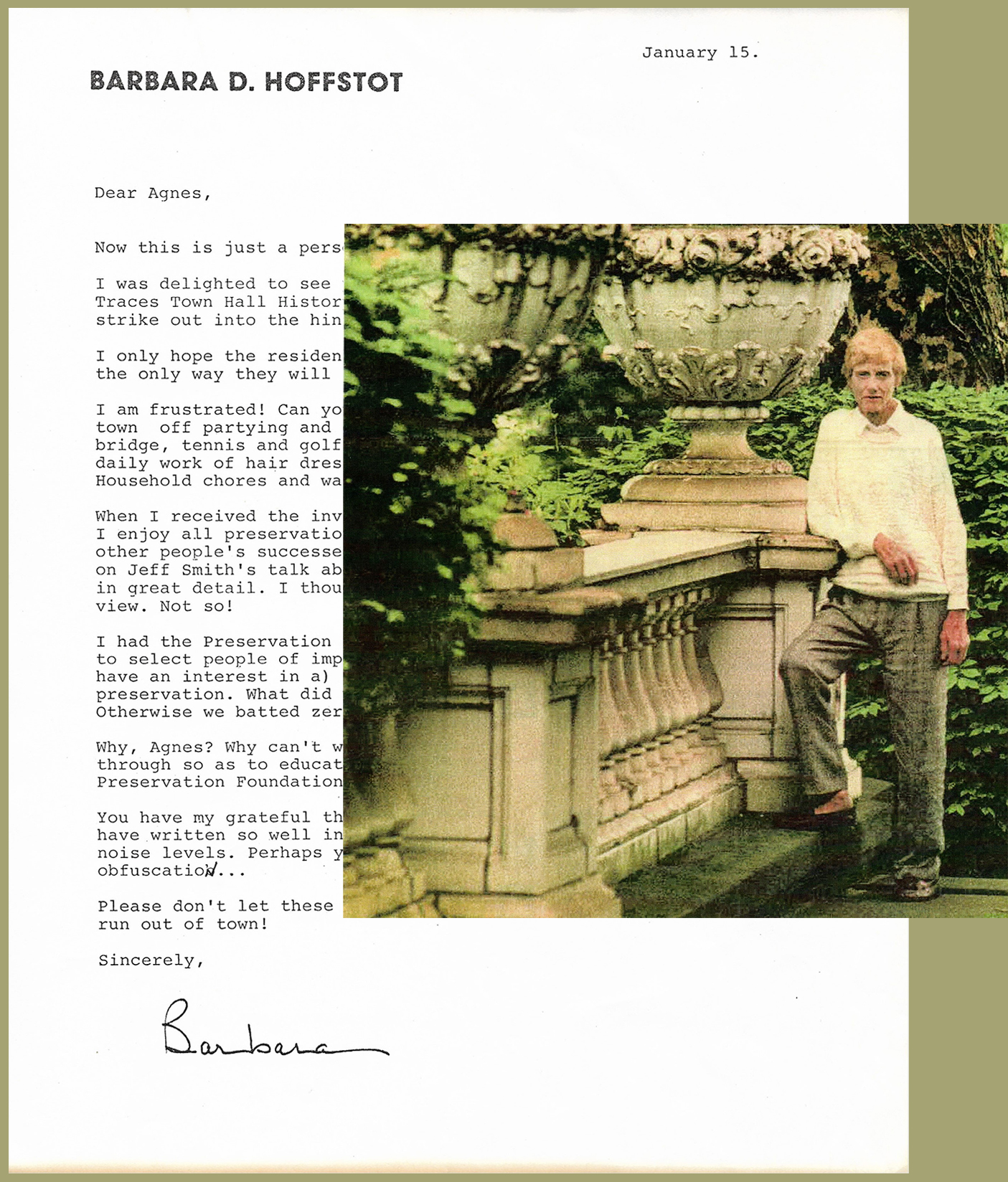
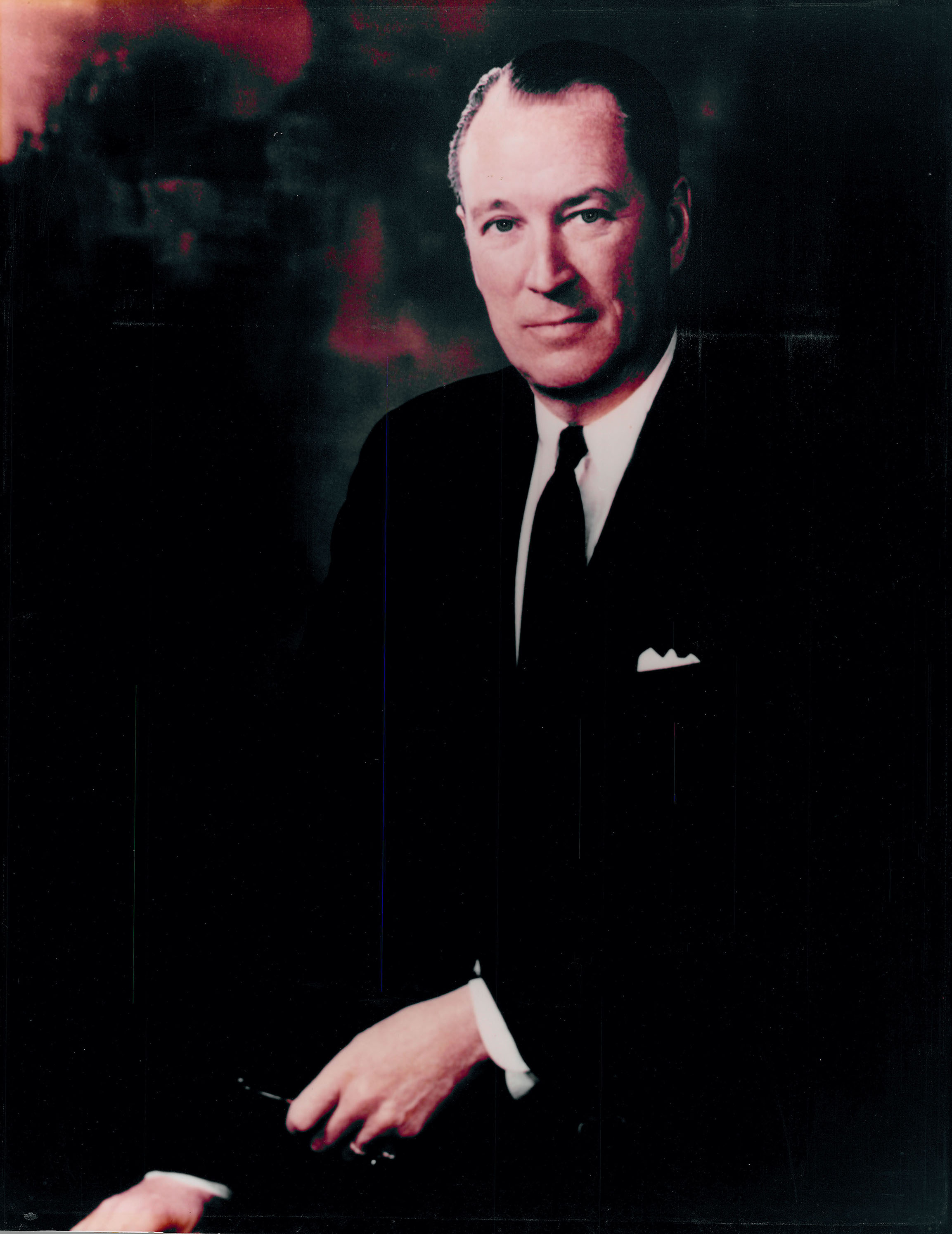
LeBaron Willard
LeBaron Willard

Before becoming involved in historic preservation, LeBaron S. Willard Jr. (1909-1964) was born and raised in New York City. He recieved his bachelor’s degree from Harvard College, where he was a member of the Fly Club, served in the U.S. Navy, and wintered in Palm Beach.
In the late 1970s, Willard served as the first chairman of the Landmarks Preservation Commission after Philip Hulitar stepped down. During his tenure, he advocated for designating historic districts rather than appointing single landmarks. Willard concluded that the individual designation protocol had produced a relatively weak result, and stated “the time has come to move from a one-at-a-time designation process to a comprehensive grasp of the main objective of all of us, the preservation of all of Palm Beach as an entity.” The proposal did achieve success, but not without some failure. The Phipps Plaza Historic District was designated in 1982, while the Worth Avenue Historic District was defeated in 1983.
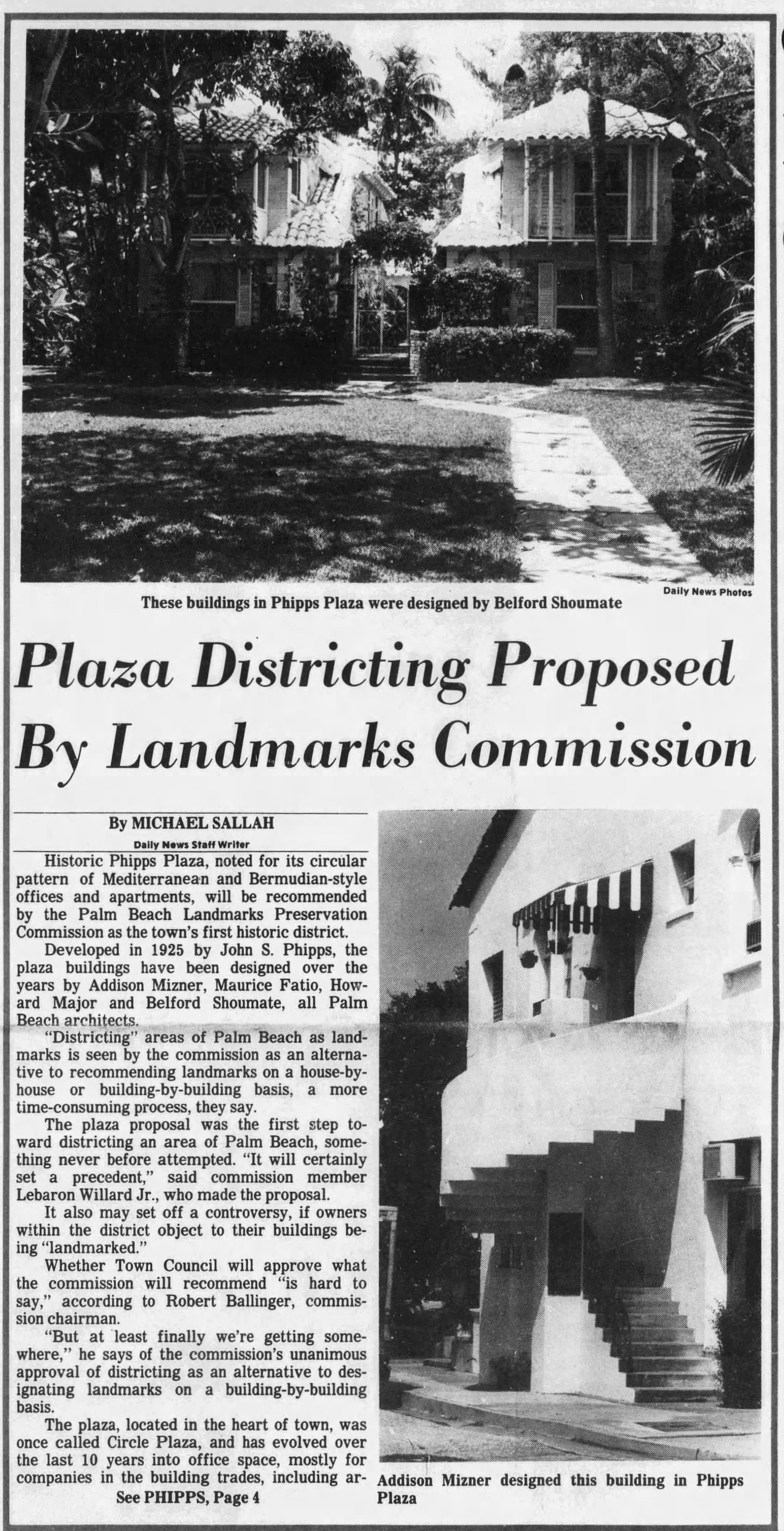
Willard believed the formation of an organization with the sole purpose to preserve the architectural heritage of the Town was necessary. In 1979, Willard, along with Bob Rogers, Robert Grace, and John VanRyan formed the Preservation Society of Palm Beach (later the Preservation Foundation of Palm Beach). Willard served as the first president of the Foundation and became the bridge between the Foundation’s advocacy efforts and the Town of Palm Beach. Additionally, he served on board for the Good Samaritan Hospital and as the vice president of the Society of Four Arts.
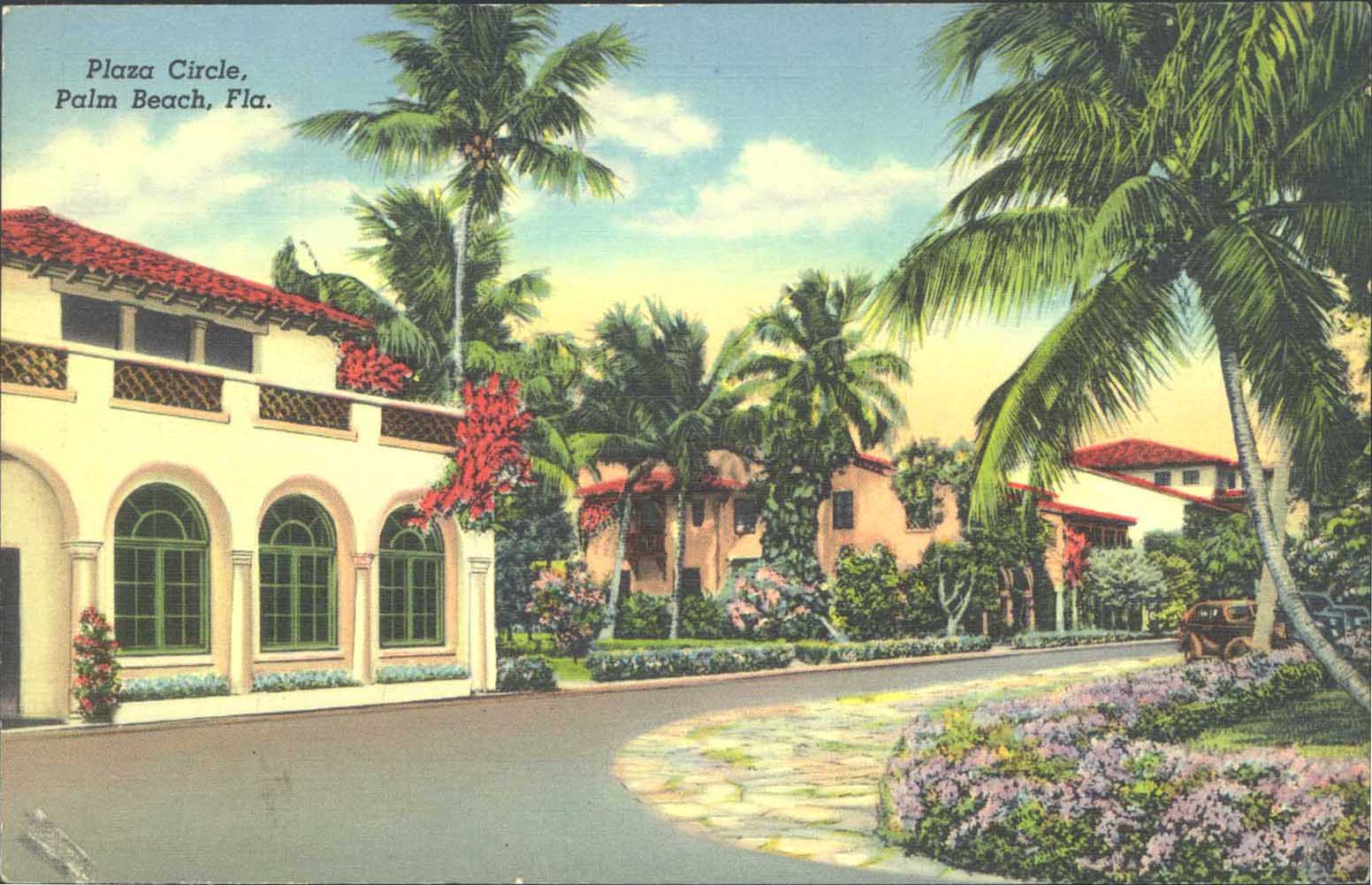
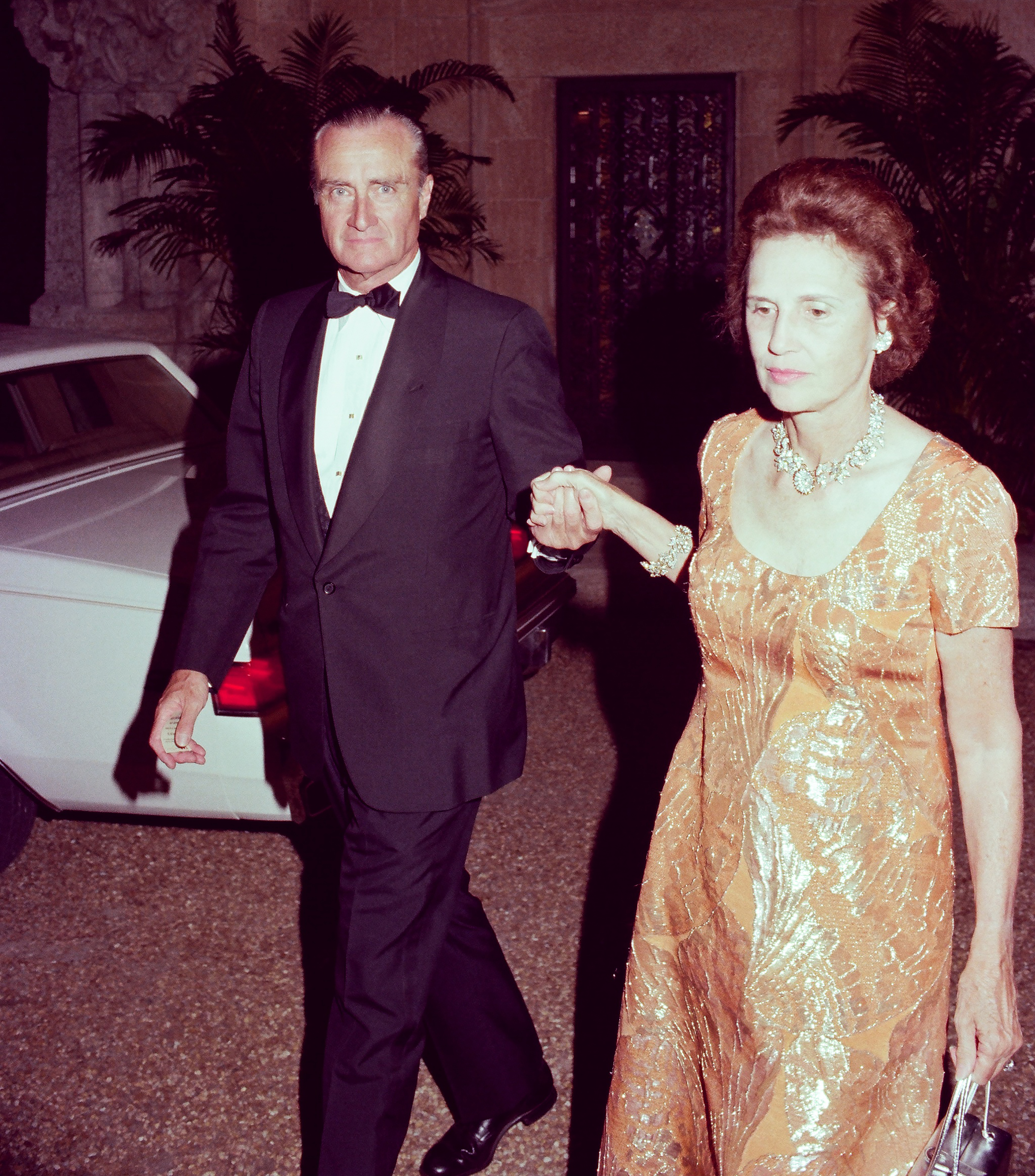
Robert Ballinger
Robert Ballinger

Robert I. Ballinger Jr. (1918-1987) graduated from Cornell’s School of Architecture and was president and chairman of his family’s architectural engineering firm, The Ballinger Company, which specialized in hospital design. A firm believer in civic responsibility, Ballinger was active in several Philadelphia area organizations before moving to Palm Beach in 1974.
Ballinger was particularly proud of restoring his home along with his wife Wynn “Didi.” Known as La Bellucia, the residence was originally built in 1922 by Addison Mizner. Before it was purchased by Ballinger, La Bellucia was empty for twelve years and was scheduled for demolition in 1974. It was restored by the Ballingers and designated as a landmark in 1983. Situated on a hill overlooking the ocean, La Bellucia is located just south of the Bath and Tennis Club, where Ballinger acted as treasurer for many years.
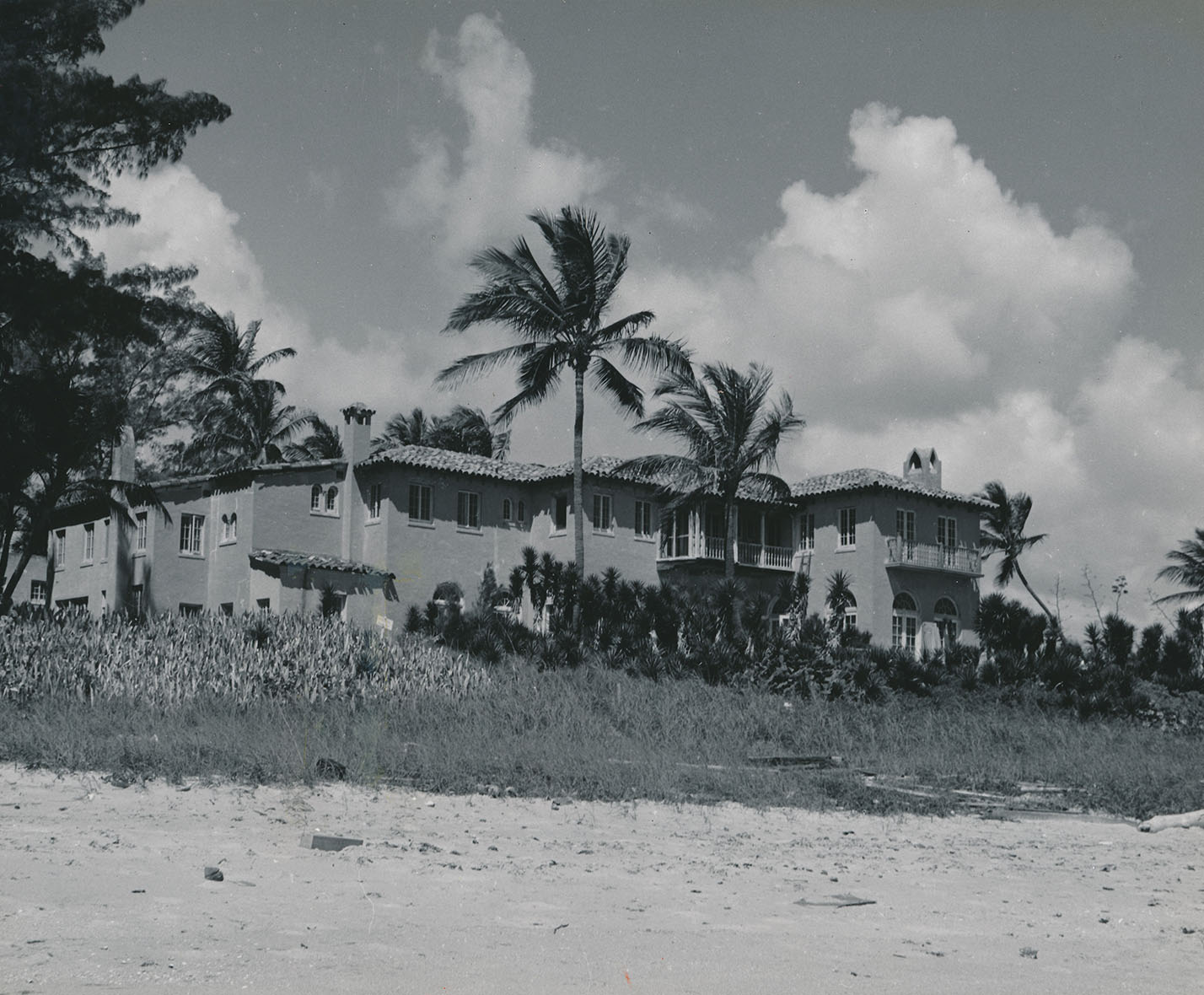
Ballinger’s sense of public duty led him to accept his position as chairman of the Landmarks Preservation Commission in 1979. Similar to his peers on the commission, Ballinger was opposed to the overdevelopment that was threatening the island by the late 1970s. He stated, “The whole feeling of Palm Beach was starting to slip, the island was being invaded by developers.” Ballinger served as chairman of the commission until 1985, and he actively fought to preserve and maintain the Town’s unique character.
The Ballinger Award was first presented by the Foundation in 1988 in honor of the late Robert I. Ballinger Jr. The Ballinger Award commemorates the restoration or rehabilitation of a landmarked estate or public space that best exemplifies Palm Beach’s architectural heritage.
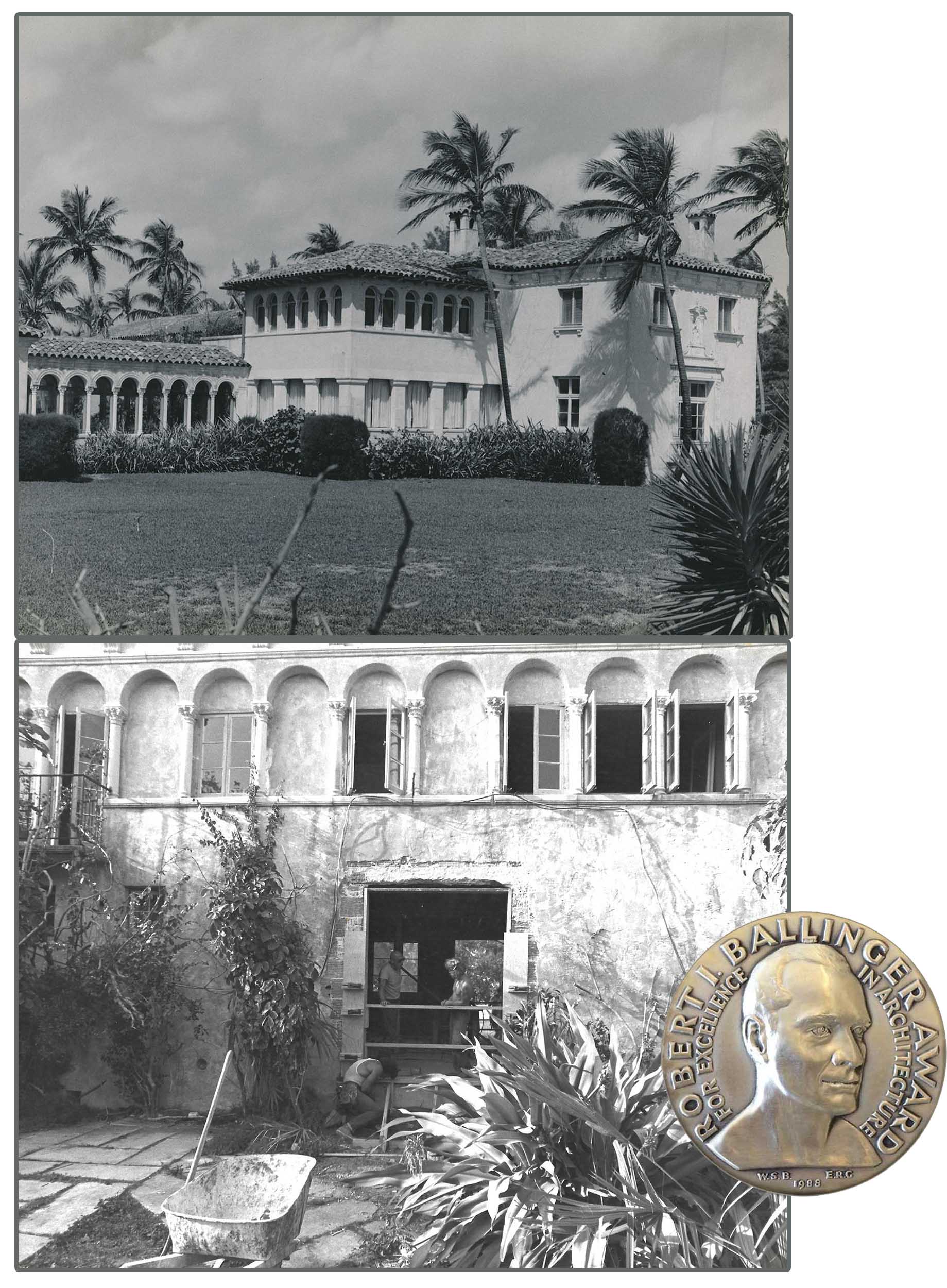
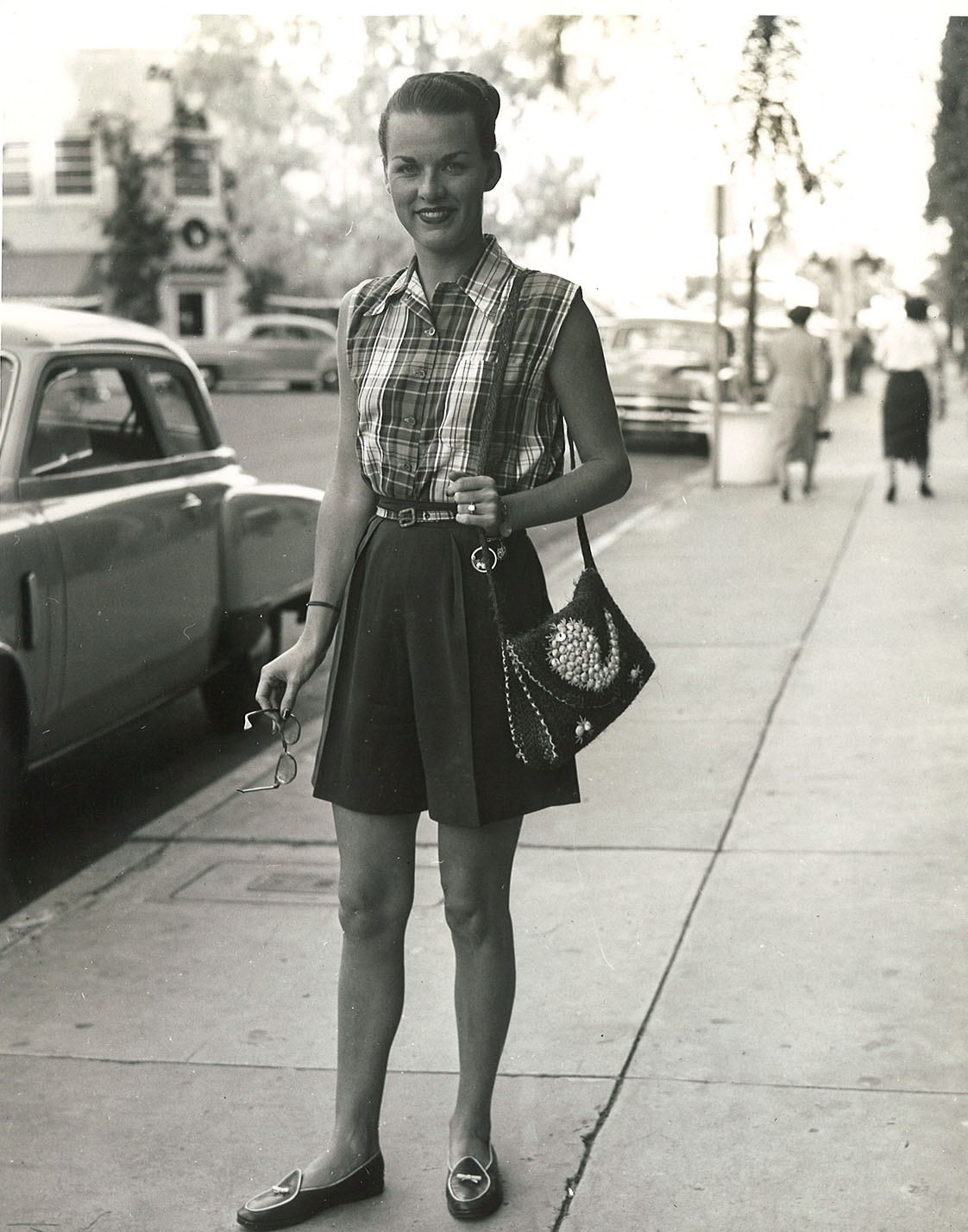
Jane Volk
Jane Volk

Lillian Jane Kinney Volk (1922-2010) was a preservationist and an artist who devoted her life to protecting the work of her late husband, architect John L. Volk. Jane was raised in Springfield, Massachusetts where she received a Bachelor’s of Art and later an Honorary Doctorate of Humane Letters from the American International College. She became familiar with South Florida after visiting relatives in Miami and eventually married John Volk in 1947. The couple shared a love for architecture and traveled extensively. Jane’s primary focus, one she shared with her husband, was a devotion to the Town of Palm Beach and maintaining the unique, historic charm of the island. The couple resided in a designated residence renovated by Volk in Phipps Plaza, the town’s first historic district. The property, named Casa de Los Arcos, served as both Volk’s home and office.
Along with participating in Palm Beach society, Jane gravitated towards preservation efforts, especially after the loss of her husband in 1984. Jane was particularly concerned with preserving her husband’s work, most notably La Ronda, which was unfortunately demolished in 2003. However, Jane’s advocacy protected Volk’s Regency style shopping center, the Royal Poinciana Plaza and Playhouse, which was designated as a landmark in 2008. Jane served as a member of the Landmarks Preservation Commission from 1987 to 1995, with several years as chairman. She also served on the Board of Trustees at the Norton Gallery of Art — now the Norton Museum of Art — from 1966 to 1993, serving as president of the board from 1979 to 1981. At the time of her death, she was on the board of trustees at the Preservation Foundation of Palm Beach.
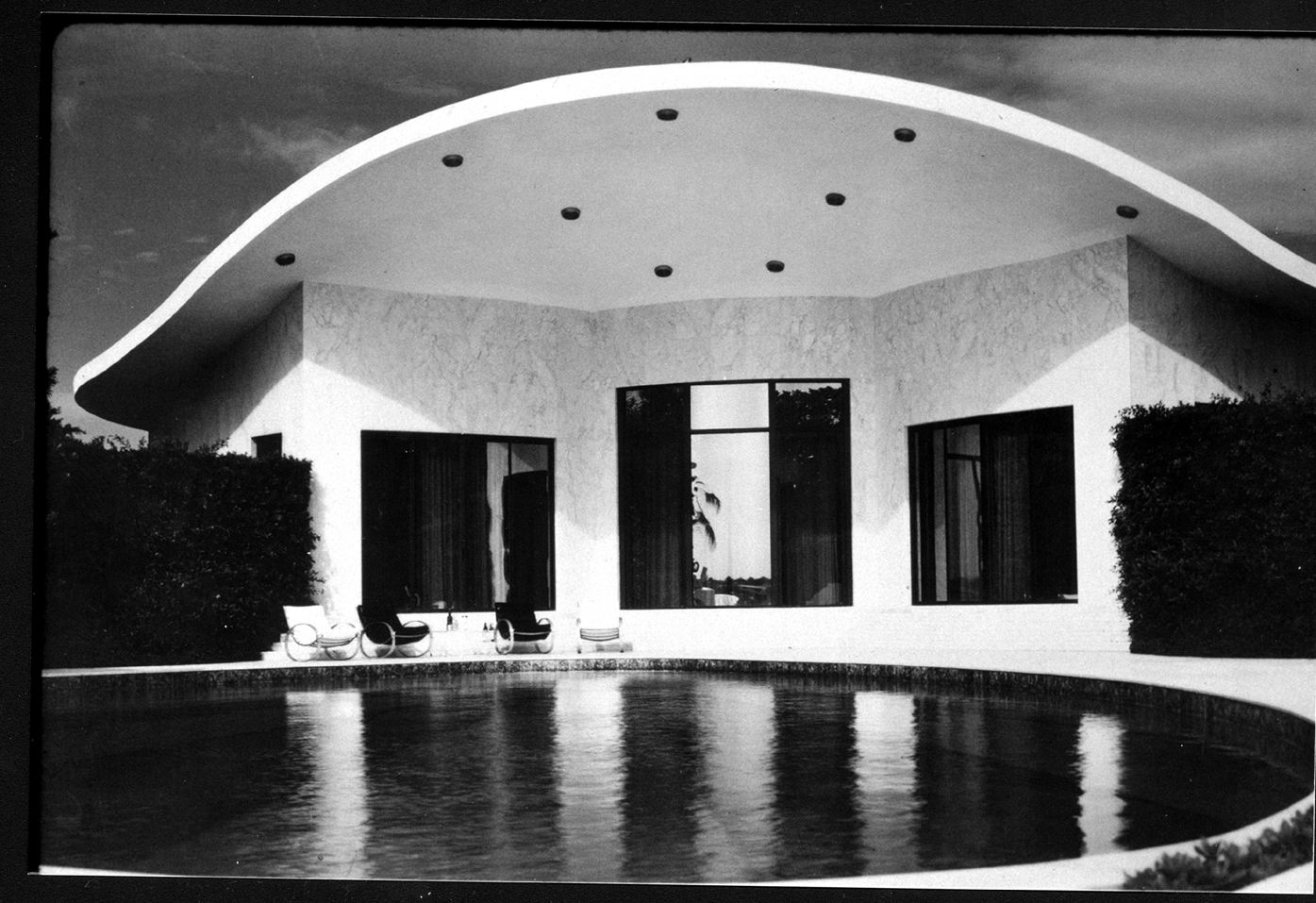
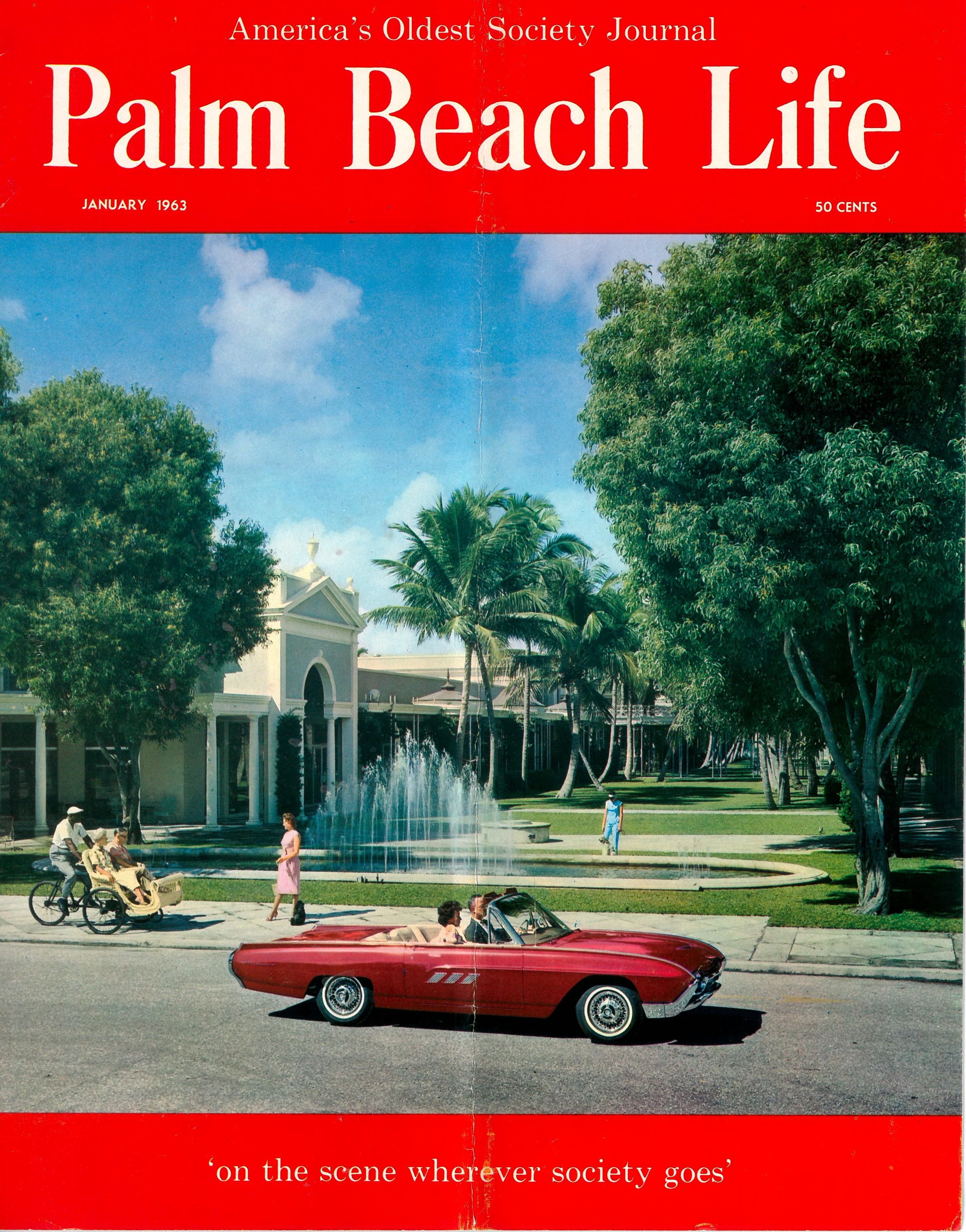
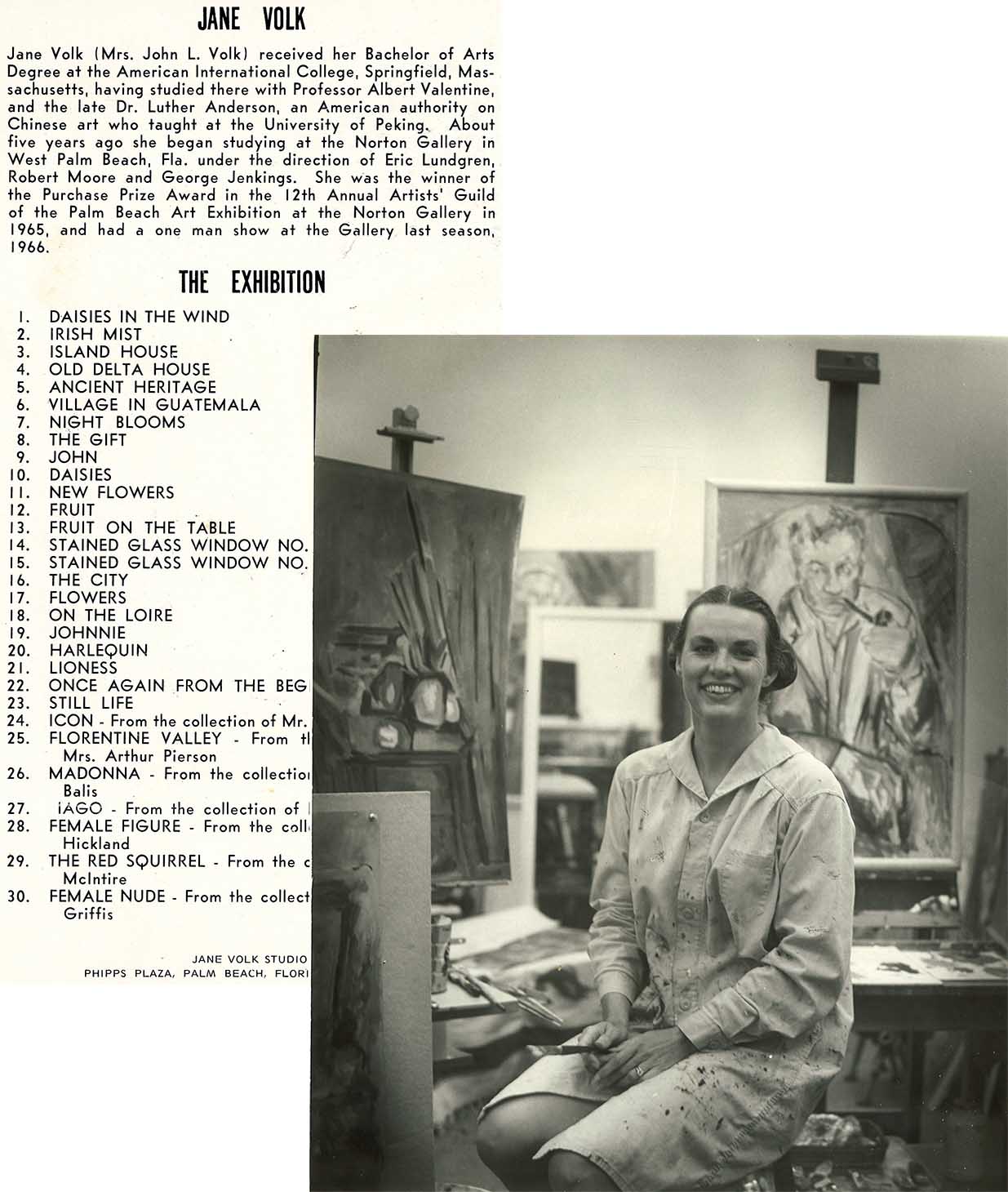
In memory of late husband, Jane established the John L. Volk Archives, the John L. Volk Foundation and co-authored a book on his life and work. In 2018, the John L. Volk Collection was donated to the Preservation Foundation of Palm Beach by Jane and John Volk’s son, John K. Volk Jr. The collection contains over 24,000 architectural drawings, 300 volumes from his personal library, 4,000 photographs, and a collection of Volk family correspondence and social history documentation.
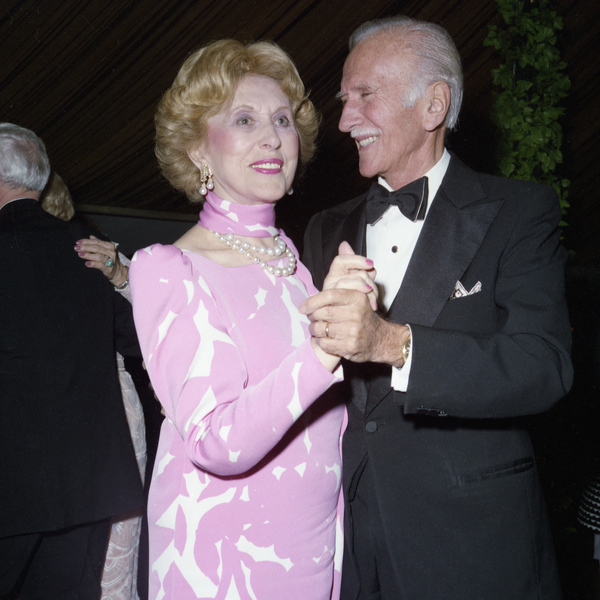
Philip Hulitar
Philip Hulitar

Philip Hulitar (1905-1992) was a fashion designer, artist, and preservationist. Born in Athens and educated in France and Italy, Hulitar developed an interest in design while accompanying his mother to Paris fashion shows. After World War I, Hulitar moved to the United States and worked as a stocks salesman on Wall Street before becoming involved in the fashion industry.
He worked at Bergdorf Goodman in Manhattan as head of the women’s dress division for eighteen years before opening his own design firm in 1949. By the 1950s, Hulitar was recognized as a distinguished fashion designer and is best remembered for his sophisticated cocktail dresses and women’s evening wear. Hulitar gained global recognition when he was featured in the United States collection displayed at the World’s Fair in Brussels in 1958. In 1964, Hulitar retired from fashion and moved to Palm Beach. He restored several homes on the north end and exhibited his artwork in galleries.
Prior to the creation of the Landmark Ordinance in 1979, Hulitar worked closely with Barbara Hoffstott and researched twenty-five preservation ordinances to build the foundation for a Palm Beach landmarks ordinance. Hulitar was also present at the first official meeting of the Landmarks Preservation Commission where he served as chairman. Hulitar began the first meeting by stating, “Today we are finally an approved commission and one in a position to proceed in the very important task of preserving what is left of our heritage, both historic and architectural… The destruction of conformity and harmony of design which once made us famous must be stopped, and I think that is the whole substance of our commission.” After this achievement, Hulitar resigned at the end of the first meeting and left the role of chairman to LeBaron Willard.
Hulitar was a patron of the arts and served as vice president of the Society of Four Arts. In 1979, he designed and endowed the Sculpture Garden for the Society of Four Arts, later renamed in his honor.
